
 |
|
|
#1 |
|
Member
Join Date: Dec 2005
Posts: 164
|
I just would like to get information on this sword,Check out the last pic it is the same part of the blade taken in the same light,just one picture was straight down and one with it pointed away from me
Thanks for any help  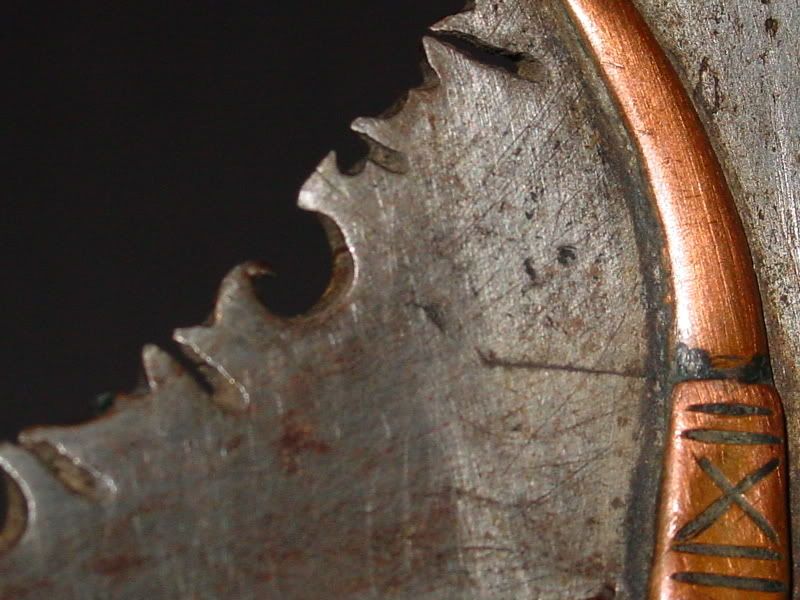 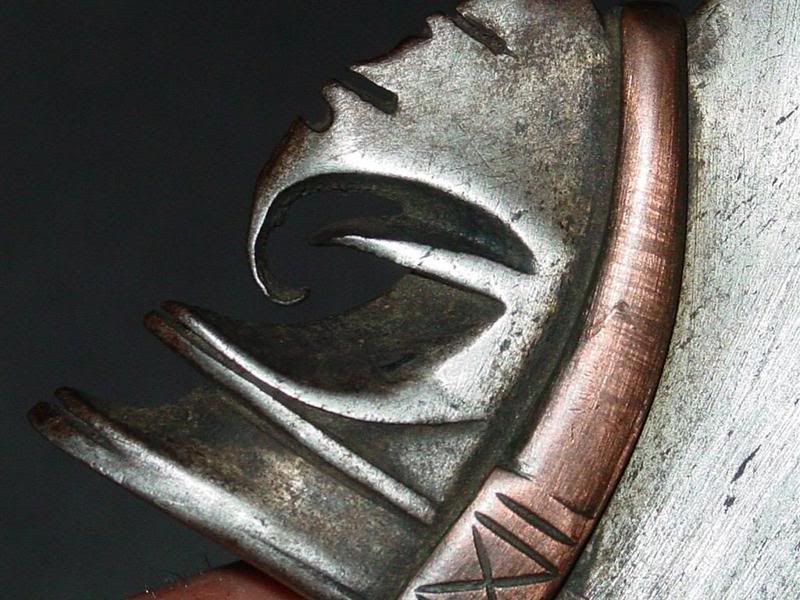  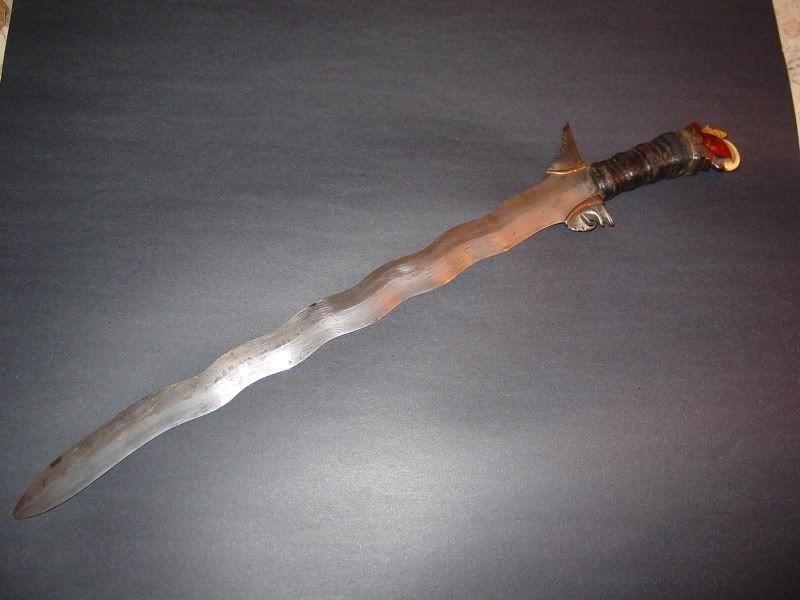 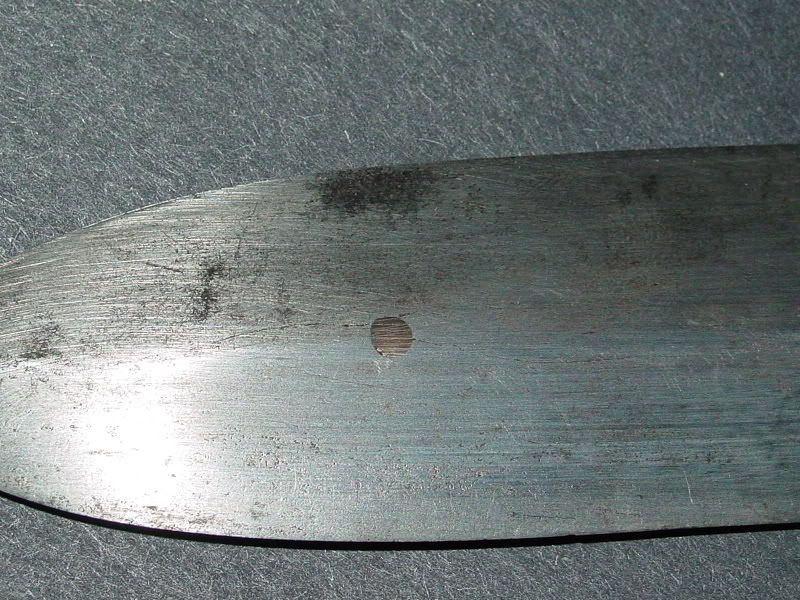 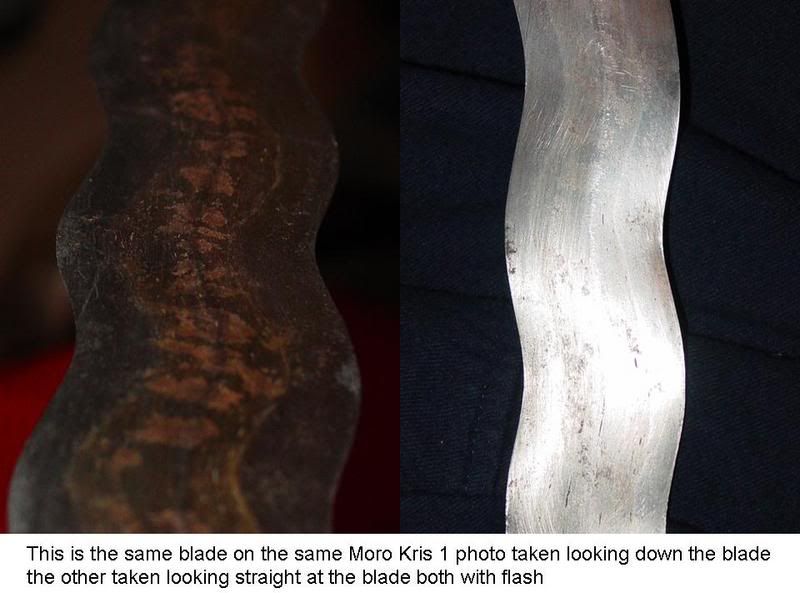 Thanks |
|
|

|
|
|
#2 |
|
Vikingsword Staff
Join Date: Nov 2004
Posts: 6,293
|
Hi Alan,
You have a very nice Gentry quality sword.  The pommel is quite unusual; is there a piece broken off? The blade of your sword appears to have a contrasting core or inlay running down the center of the blade. From the appearance of this piece the hilt and wrap are old. The Asang-asang (blade clamps) are interesting in that one appears to be made of Swaasa alloy. Rick |
|
|

|
|
|
#3 |
|
Member
Join Date: Apr 2005
Posts: 3,254
|
Hello Alan,
I'm glad you didn't sold this kris - seems to be a really, really nice kalis seko from Sulu! That must be a twist core blade (search this forum for more info and pics of other pieces). The blade needs to be slightly etched to make the pattern more easily visible (apparently polished off by an misinformed US veteran as is often the case with war souvenirs); please consider to let this do by someone like Battara if you don't feel comfortable with a DIY approach. It would be very interesting to test those different metals/alloys utilized in the fittings! I wouldn't be surprised if the asang-asang are made from swaasa - look more like copper to me though. Regards, Kai |
|
|

|
|
|
#4 |
|
Member
Join Date: Dec 2004
Location: Italia
Posts: 1,243
|
Beautiful
 !! Is the pommel carved from hornbill? See this other thread !! Is the pommel carved from hornbill? See this other thread http://www.vikingsword.com/vb/showthread.php?t=638 |
|
|

|
|
|
#5 | |
|
Vikingsword Staff
Join Date: Dec 2004
Location: The Aussie Bush
Posts: 4,207
|
Flavio:
I believe that is a striped wood called banati, which is used quite often for pommels on barung, kris, kampilan, etc. It's a very desirable and expensive wood among moro communities. Ian. Quote:
|
|
|
|

|
|
|
#6 | |
|
Member
Join Date: Dec 2005
Posts: 164
|
Quote:
I believe there is a break in the ivory part it seems it may have had 2 little curls instead of the one. Thank You everyone for all the info. Can someone tell me more about the spot or dot near the point ,it only has the one that appears to go all the way thru the blade. Thanks again |
|
|
|

|
|
|
#7 |
|
EAAF Staff
Join Date: Dec 2004
Location: Louisville, KY
Posts: 7,226
|
I don't know the meaning of the dot in the blade, although it looks like copper, like the asang-ansang (though only testing will tell for sure - something I can also do).
Very nice puppy! (woof!  ) )
|
|
|

|
|
|
#8 |
|
Member
Join Date: Dec 2005
Posts: 164
|
Just an FYI It is 25.5 inches long overall and the blade is 20.5 inches from the tip to the center of the grip
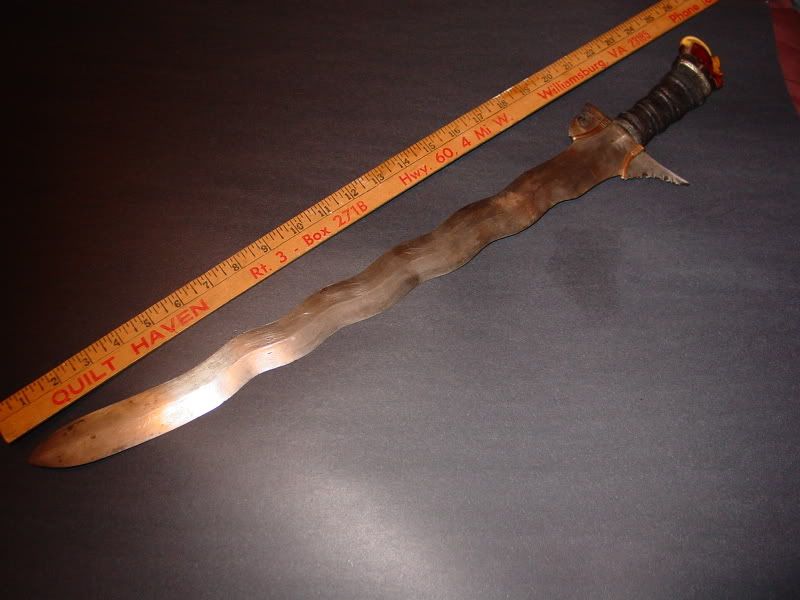
|
|
|

|
|
|
#9 | |
|
Member
Join Date: Dec 2004
Location: Italia
Posts: 1,243
|
Quote:
   Yes, i see now that the top piece of the pommel is a piece of ivory (is right? Yes, i see now that the top piece of the pommel is a piece of ivory (is right?  ) glued to the banati part, sorry ) glued to the banati part, sorry   
|
|
|
|

|
|
|
#10 |
|
Member
Join Date: Dec 2005
Posts: 164
|
If I decide to try to etch this blade myself , should I try polishing it better first to remove the old polish lines and swirls or should I just do the etching?
Any toughts on the best way a total novice should atempt to etch such a fine sword would be appreciated.Also do I need to worry about solution on the blade clamps? I am not going to attempt anything until I feel I have the right info to do it Thanks Last edited by Alan62; 6th January 2007 at 11:40 PM. |
|
|

|
|
|
#11 |
|
EAAF Staff
Join Date: Dec 2004
Location: Louisville, KY
Posts: 7,226
|
NO I don't think any polishing is needed (based on what I can see in the pictures). The fastest way may be using ferrous cloride mixed with water. However, it is highly corrosive and the old way (and safest way) is to use heated citrus juice and vinegar (heat the blade too). On the clamps, steel wool (0000) would do fine on these particular ones (do it gently).
|
|
|

|
|
|
#12 |
|
Member
Join Date: Dec 2005
Posts: 164
|
Thanks Battara, I will do as you say
|
|
|

|
|
|
#13 |
|
Member
Join Date: Dec 2005
Posts: 164
|
Is it common for another alloy such as copper or gold to be used in the core of a blade ? Look closely at the pic ,I soaked about 6 inches of the tip of my blade in vinegar just to see what the result would be and it appears there is a whole other sword inside of this blade made of a mixed alloy with copper and the dot now looks gold. When I gently rub the blade down with lime juice or vinegar the sharp edges darken very quickly but the center does not .Soaking the end of the blade revealed what appears to be mixed cooper gold and silver or nickle down the center

|
|
|

|
|
|
#14 |
|
Member
Join Date: Dec 2005
Posts: 164
|
Another pic of whole blade
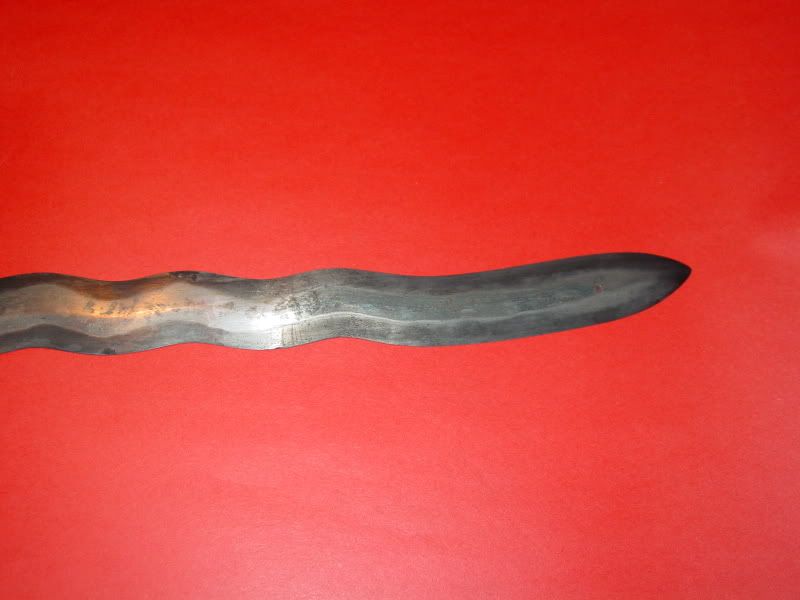
|
|
|

|
|
|
#15 |
|
Member
Join Date: Apr 2005
Posts: 3,254
|
Hello Alan,
That's the usual construction with a high-carbon steel for a good cutting edge sandwiched between more ductible steel/iron for making the sword less brittle. The latter often shows more extensive lamination or twist core pattern. Can you post a close-up from the base of the blade so that we can see the pattern better? From your angled shot I was guessing at twist core but your current pics look more like lamination parallel to the swords plane (called pamor mlumah on Java). The spot at the tip is most likely silver which usually gets a golden patina from fruit acids - see this thread: http://www.vikingsword.com/vb/showthread.php?t=1243 Don't soak your sword as not to overdo the etching. The glittering you're seeing is the metal structure rather than some fancy metals in an alloy or pamor.  Regards, Kai |
|
|

|
|
|
#16 | |
|
Member
Join Date: Apr 2005
Posts: 3,254
|
Quote:
Regards, Kai |
|
|
|

|
 |
|
|